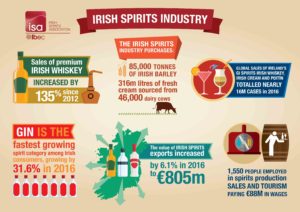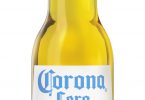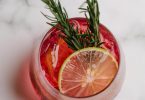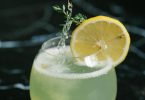Irish spirits must chase premium market
Exports have increased substantially in recent years, according to the new report released last night by the Irish Spirits Association at an event in Sam’s of Dawson Street, Dublin.
In introducing the report ISA Chairman John Harte pointed out that this was the first report from the Association since it came into being in 1997.
Members of the all-island Irish Spirits Association employ over 1,550 people in spirits production north, sales and tourism, paying €88 million in wages north and south. The island of Ireland spirits industry purchases 316 million litres of fresh cream from Irish farmers, sourced from 46,000 dairy cows. Additionally, 85,000 tonnes of Irish malted and unmalted barley are purchased by the Irish whiskey industry every year.
ISA Head William Lavelle pointed to Irish whiskey’s “phenomenal” growth of 11.2% last year to 8.7 million cases.
Spirits exports
The value of our spirits exports increased by 6.1% in 2016 which means that the overall value of these exports in RoI alone increased by 29% between 2011 and 2016, up from €624.27 million to €805.33 million. Exports are set to grow by even more in 2017, with Irish gin exports expected to make a breakthrough.
And according to the CSO, the value of RoI’s Irlsh whiskey exports grew 18.5% in the first six months of 2017, notes the report.
There had also been a 135% increase in premium Irish whiskeys over the last five years with 24% growth in the last year alone.
Altogether, the premium, super premium and ultra premium Irish whiskeys were worth over €330 million last year.
Ireland was now home to 30 brands of gin, stated William Lavelle.
“This report paints a bright picture of a dynamic industry with a vast economic footprint,” he told guests, “The spirits sector is a major employer and a significant supporter of Irish farmers. It’s an industry that can deliver even more exports, more jobs and more domestic sourcing if we’re allowed.”
Global sales of Ireland’s Geographic Indicator spirits – Irish whiskey, Irish cream and Poitín – totalled nearly 16 million cases, worth nearly €4 billion in sales in 2016 according to the report.
GI protection means that these three spirits can only be made on the island of Ireland in line with an EU-approved technical file. GIs protect the integrity and quality of these spirits categories and the investment being made in production and employment on the island of Ireland.
“Ireland’s GI spirits are a global success story,” pointed out William Lavelle, “Protecting the GIs must be an ongoing priority. The Irish Spirits Association is calling on Government to ensure that the preservation of Ireland’s three All-Island spirit GIs remains a priority in Brexit negotiations.”
Domestic market
Apart from the high excise rates, one of the major threats the spirits industry faces at present is the Public Health (Alcohol) Bill, he warned, which will place additional draconian restrictions on new players entering the market and trying to market their products.
“We anticipate that this Bill will undermine investment in the Irish spirits industry,” he claimed, “It will damage competition, deter innovation and it will threaten future export growth. We want to work with Government to achieve a more balanced approach that will effectively address concerns while preserving investment, competition and export growth.”
This is perhaps best illustrated in that only 6% of our whiskey is consumed domestically.
According to the report, 56% of the spirits consumed here – two-thirds of it through the off-trade – is produced here.
But a key trend in the Irish market has been the remarkable surge in the popularity of gin, now the fastest-growing spirits category among Irish consumers, it grew by 31.6% last year.
“Similar levels of growth are being reported for the first half of 2017, both in the on- and off-trades,” the report notes.
Meanwhile, vodka remains Ireland’s most popular spirits drink, but sales have fallen by a quarter in the past decade.
Vodka comprises 35% of overall spirits sales here. In the off-trade vodka is responsible for 39.4% of spirits sales against 26.5% of on-trade spirits sales.
Irish whiskey comprises 24.3% of overall spirits sales with it taking 26.6% of off-trade spirits sales and 19.7% of on-trade spirits sales.
Today it’s those males in the 25 to 34 year-old age bracket that top the spirits consumption graph at 21% while females in the 35-44 year-old age bracket top theirs at 21%.
While the report notes that the Irish market is dynamic and rapidly-changing, the overall consumption of spirits in Ireland has fallen by 19.2% over the past decade to 2.15 million cases.
As alcohol consumption falls at home, Irish spirits exports are growing at an ever-increasing rate as the number of distilleries operating in Ireland grows from just four a few years ago to 18 now.
The report also noted that following a lost decade for Irish cream liqueur 2016 saw a return to growth.
The report, a roadmap to future progress in the spirits market, was launched by the Minister of State for Food, Forestry and Horticulture in the Department of Agriculture, Food and the Marine Andrew Doyle TD.
In his speech, the Minister of State hoped that the drinks industry could come to an acceptable arrangement over the Alcohol Bill.
“I’ve just left a Cabinet Meeting which was discussing the Alcohol Bill,” he told those present.
He pointed out too that as it was impossible to compete with multinationals on volumes and value, so the Irish spirits industry had to compete and via high-end product.









